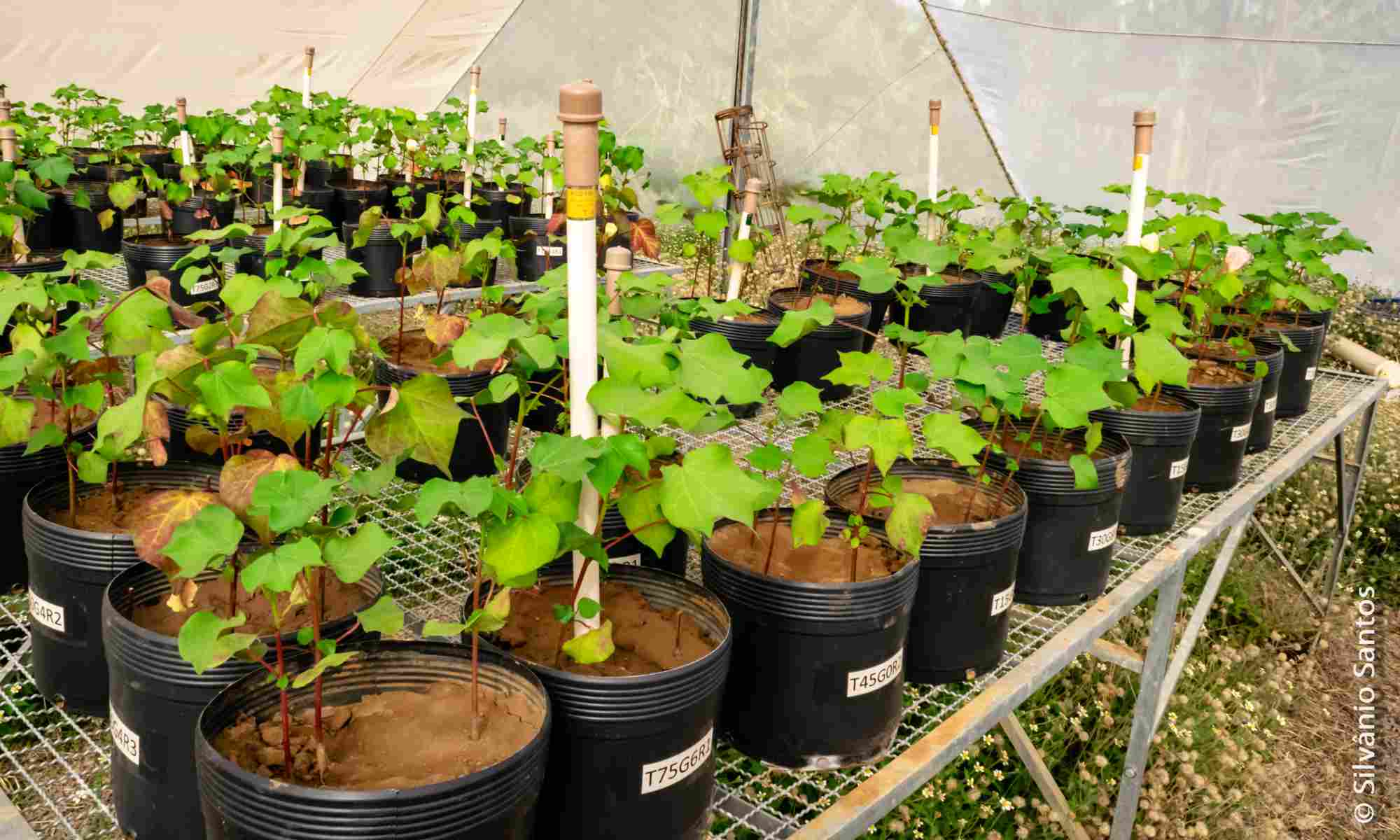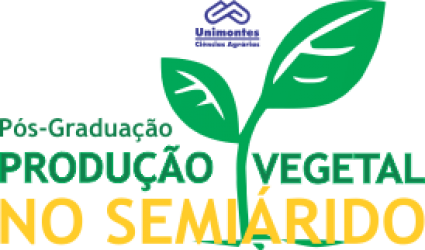- Version
- Download 21
- Tamanho do Arquivo 650.04 KB
- Data de Criação 16/06/2021
- Download
SOUZA, Bruna Aparecida Madureira de. Marcha de absorção de nutrientes e crescimento do abacaxizeiro ‘Vitória’ irrigado. 2012. 112 p. Dissertação (Mestrado em Produção Vegetal no Semiárido) – Universidade Estadual de Montes Claros, Janaúba, 2012.
O conhecimento sobre o crescimento e nutrição mineral do abacaxizeiro é fundamental para o manejo correto da cultura. Assim, o objetivo deste trabalho foi avaliar o crescimento vegetativo, absorção e acúmulo de nutrientes no abacaxizeiro ‘Vitória’ irrigado em condições do semiárido. O delineamento estatístico utilizado foi em blocos casualizados, com quatro repetições. Os tratamentos foram definidos por nove épocas de amostragem de plantas e seus componentes (270, 330, 390, 450, 510, 570, 690, 750 e 810 dias após o plantio (DAP). Durante o período de condução do estudo e para cada época de amostragem foram avaliadas as seguintes características: altura de plantas, diâmetro do talo, comprimento da folha D, acúmulo de matéria fresca e seca dos distintos compartimentos da planta, da biomassa total e vegetativa, produção de frutos, absorção, acúmulo e exportação de macro e micronutrientes na cultura. Os resultados foram submetidos à análise de variância e na presença de diferenças significativas (p<0,001), foram ajustados modelos de regressão não linear. Por meio da produção relativa de biomassa vegetativa foram propostos cinco estádios fenológicos de crescimento do abacaxizeiro: até 20% de produção de biomassa-V1; 21-40%-V2; 41-60%-V3; 61-80%-V4; acima de 80%-V5. A maioria das características de crescimento, como altura de plantas, comprimento da folha D, diâmetro do talo e produção de biomassa nos componentes da planta tiveram incremento inicial lento (no estádio fenológico V1), e atribuído ao menor tamanho e tipo de muda utilizado no plantio. O acúmulo máximo de biomassa vegetativa ocorreu entre os estádios V4 e V5.As folhas foram responsáveis pela produção final de 54 a 47% da biomassa total de matéria fresca e seca, respectivamente. As taxas de crescimento relativo foram maiores no estádio V1 e decresceram com o tempo de cultivo, no entanto as taxas de máximo acúmulo foram observadas nos estádios V4 e V5, implicando a produção final de 72 t ha-1 de frutos e 326 t ha-1 de biomassa da planta (matéria fresca).O conteúdo médio de macro e micronutrientes absorvidos pelo abacaxizeiro ‘Vitória’ foi considerado superior àqueles encontrados em literatura. As folhas e o talo foram os componentes da planta que apresentaram maior acúmulo de nutrientes. O acúmulo de macronutrientes no abacaxizeiro ‘Vitória’ apresentou a seguinte ordem decrescente: K>N>S>Ca>Mg>P e correspondeu a 898,32 kg ha-1 de K; 451,71 kg ha-1 de N; 134,27 kg ha-1 de S ; 129,17 de kg ha-1 de Ca; 126,41 kg ha-1 de Mg107,26 kg ha-1 de P; . No entanto, a exportação de macronutrientes pelo fruto na cultura do abacaxizeiro seguiu a seguinte ordem decrescente: K>N>S>Ca>P>Mg. Para micronutrientes, o acúmulo total apresentou a seguinte ordem decrescente: Fe>Zn>Mn>Cu. No entanto, a exportação de macronutrientes pelo fruto na cultura do abacaxizeiro seguiu a seguinte ordem decrescente: Zn> Fe> Cu>Mn. Os conteúdos de nutrientes exportados pelos frutos representaram importante componente de extração de nutrientes do solo, que deverão ser restituídos, enquanto os nutrientes contidos nas folhas, talo e raiz podem ser incorporados ao solo dentro de um programa de reaproveitamento de restos culturais.
Palavras-chave: Ananas comosus var. comosus, análise de crescimento, matéria seca.
Nutrient absortion march and growth of irrigated ‘Vitória’ pineapple
Knowing on the growth and mineral nutrition of pineapple is fundamental for its correct management. Thus, this work aimed to evaluate the vegetative growth, absorption and accumulation of nutrients in the ‘Vitória’ pineapple under irrigated conditions of the semiarid. The used statistical design was in blocks at random, with four repetitions. The treatments were defined for nine times of sampling of plants and their components (270, 330, 390, 450, 510, 570, 690, 750 and 810 days after planting (DAP). During the study period and for each sampling time the following characteristics were appraised: plants height, stem diameter, length of the D leaf, accumulation of fresh and dry matter of the different compartments of the plant, total and vegetative biomass, production of fruits, absorption, accumulation and export of macro and micronutrients in the crop. The results were submitted to analysis of variance and in the presence of significant differences (p < 0.001), models of no-lineal regression were adjusted. By means of relative production of vegetative biomass five phenological stages of pineapple growth were proposed: up to 20% of production of biomass-V1; 21-40% - V2; 41-60% - V3; 61-80% - V4; above 80% - V5. Most of the growth characteristics, as plants height, length of the D leaf, stem diameter and biomass production in the plant components presented slow initial increment (in the phenological stage V1), and attributed to the smallest size and type of planting material used. The maximum accumulation of vegetative biomass occurred between the stages V4 and V5. The leaves were responsible for the final production of 54 to 47% of total biomass of fresh and dry matter, respectively. The rates of relative growth were larger in the stage V1 and they decreased with the cultivation time, however the rates of maximum accumulation were observed at the stages V4 and V5, resulting in the final production of 72 t ha-1 of fruits and 326 t ha-1 of plant biomass (fresh matter). O medium content of macro and micronutrients absorbed by the 'Vitória' pineapple was considered superior to those found in the literature. Leaves and stem were the plant components that presented larger nutrients accumulation. The macronutrients accumulation in the ‘Vitória’ pineapple presented the following decreasing order: K > N > S > Ca >Mg >P. However, the macronutrients export for the pineapple fruit followed the following decreasing order: K>N>S>Ca>P>Mg. For micronutrients, the total accumulation presented the following decreasing order: Fe>Zn>Mn>Cu. However, the macronutrients export for the pineapple fruit followed the following decreasing order: Zn>Fe>Cu > Mn. The contents of nutrients exported by the fruits represented important component of nutrients extraction of the soil that should be returned, while the nutrients contained in the leaves, stem and root can be incorporate to soil inside of a program of plant residues resorption.
Keywords: Ananas comosus var. comosus, growth analysis, dry matter.

